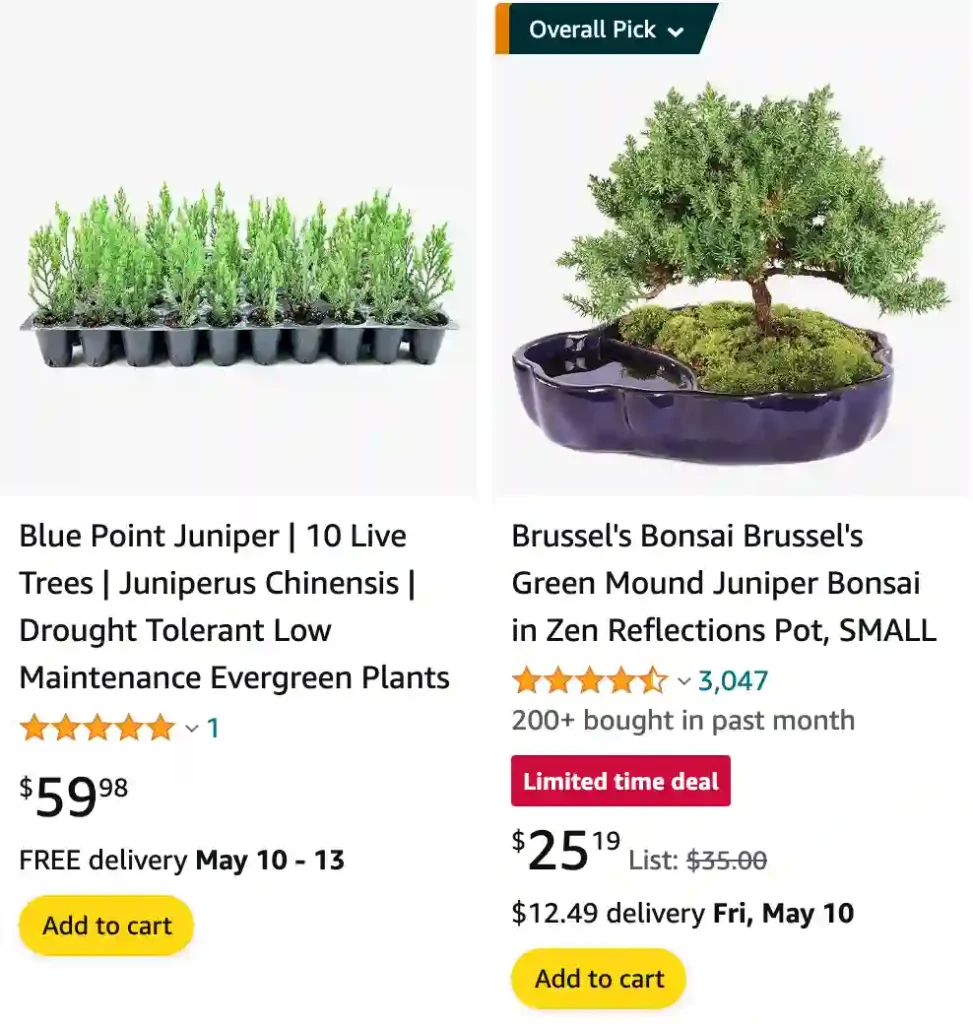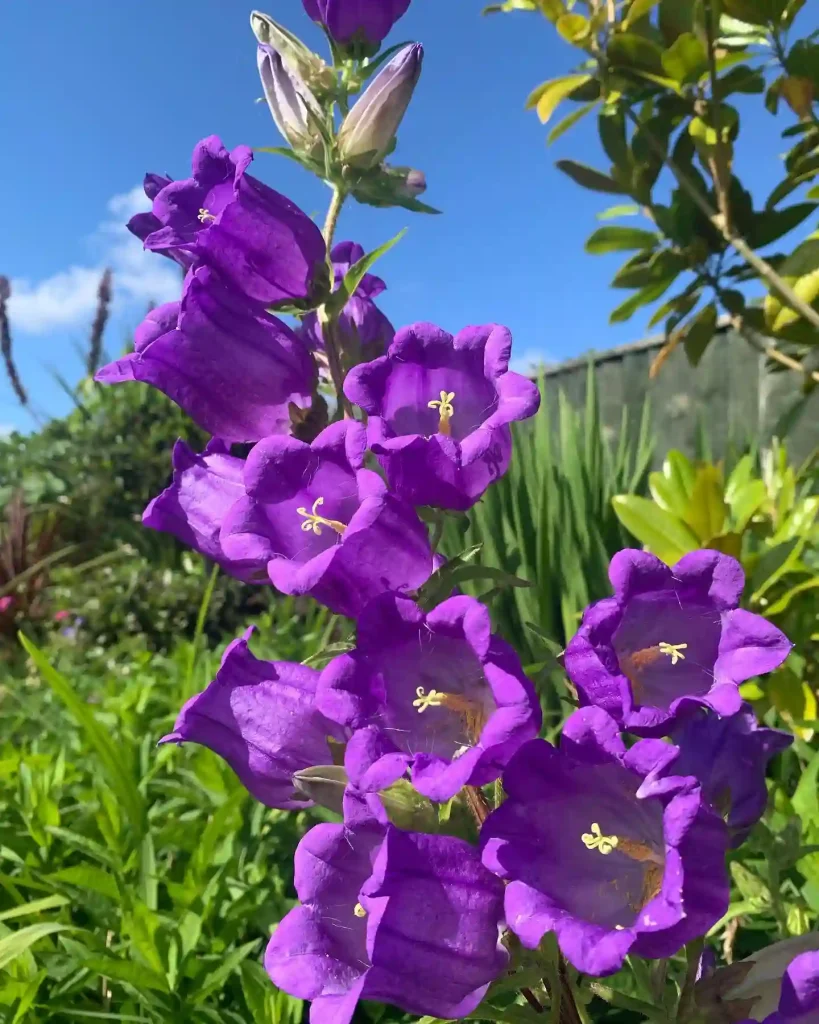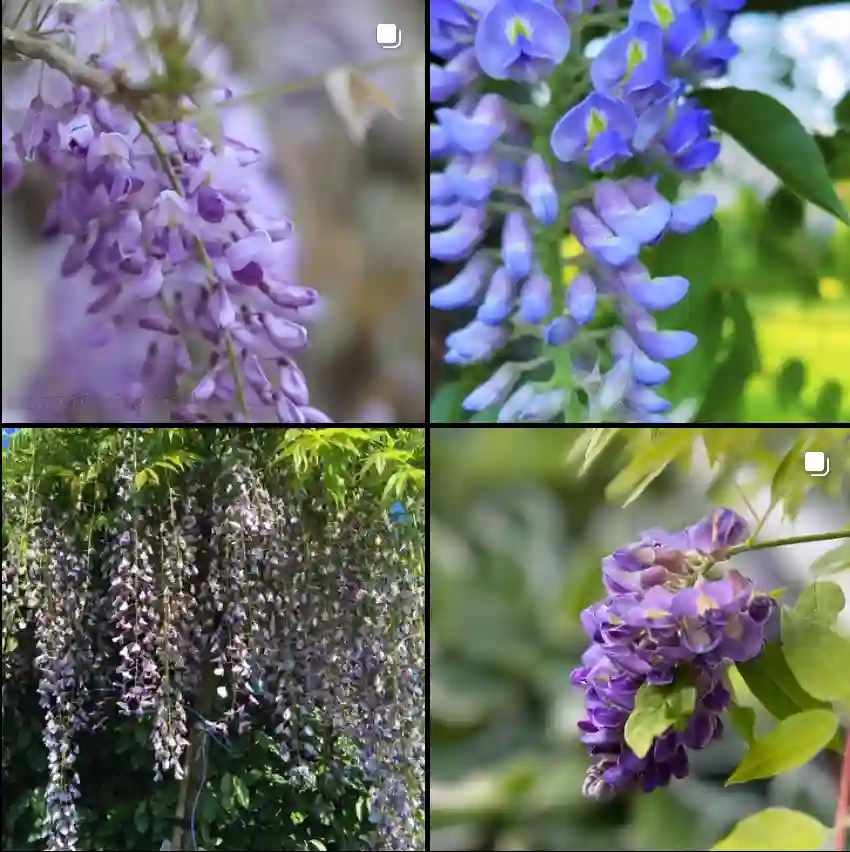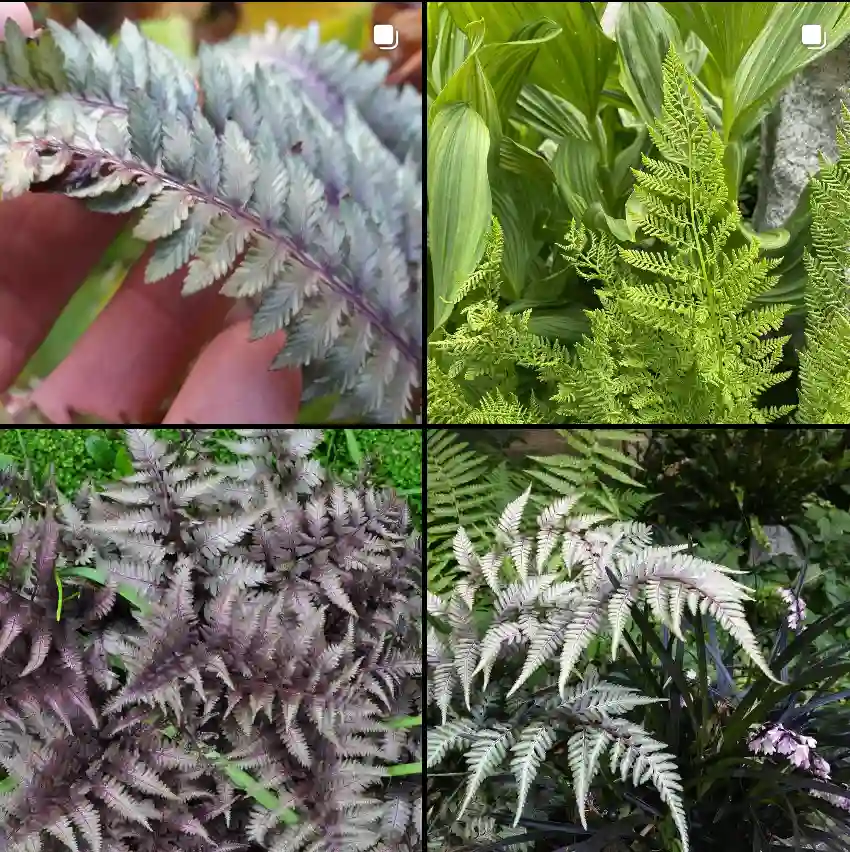
The Enchanting World of Junipers
As a lover of all things botanical, I, Ferb Vu, find myself drawn to the captivating genus Juniperus. These resilient and versatile plants, commonly known as junipers, have captivated my attention with their diverse forms, fascinating foliage, and rich history. From towering trees to ground-hugging shrubs, junipers paint a vibrant tapestry across the Northern Hemisphere, adding a touch of rugged beauty to landscapes far and wide.
A Diverse Family
The genus Juniperus, belonging to the cypress family (Cupressaceae), encompasses a remarkable array of species. Estimates place the number somewhere between 60 and 70, each with its own unique characteristics and adaptations. These evergreen conifers boast scale-like or needle-like leaves, often exhibiting a striking bluish-green hue. Their most distinctive feature, however, is their cones, which often resemble berries. These fleshy, aromatic cones are not only visually appealing but also play a crucial role in seed dispersal, attracting birds and other animals that help spread the juniper’s progeny.
A Global Citizen
Junipers are remarkably adaptable, thriving in a variety of habitats across the Northern Hemisphere. From the frigid Arctic tundra to the sun-drenched Mediterranean coasts, these resilient plants have carved out a niche for themselves in diverse ecosystems. They are pioneers, often colonizing disturbed areas and rocky slopes, their tenacious roots anchoring them to even the most unforgiving terrain. This adaptability has allowed junipers to establish a global presence, with species found across North America, Europe, Asia, and Africa.
A Tapestry of Species
The sheer diversity within the Juniperus genus is astounding:
- Juniperus × ambigens (Fassett) R.P.Adams
- Juniperus angosturana R.P.Adams
- Juniperus arizonica (R.P.Adams) R.P.Adams
- Juniperus ashei J.Buchholz
- Juniperus barbadensis L.
- Juniperus bermudiana L.
- Juniperus blancoi Martínez
- Juniperus brevifolia (Seub.) Antoine
- Juniperus californica Carrière
- Juniperus canariensis Guyot & Mathou
- Juniperus cedrus Webb & Berthel.
- Juniperus chinensis L.
- Juniperus coahuilensis (Martínez) Gaussen ex R.P.Adams
- Juniperus comitana Martínez
- Juniperus communis L.
- Juniperus convallium Rehder & E.H.Wilson
- Juniperus coxii A.B.Jacks.
- Juniperus deltoides R.P.Adams
- Juniperus deppeana Steud.
- Juniperus drupacea Labill.
- Juniperus durangensis Martínez
- Juniperus excelsa M.Bieb.
- Juniperus × fassettii B.Boivin
- Juniperus flaccida Schltdl.
- Juniperus foetidissima Willd.
- Juniperus formosana Hayata
- Juniperus gamboana Martínez
- Juniperus gracilior Pilg.
- Juniperus grandis R.P.Adams
- Juniperus × herragudensis J.M.Aparicio & Uribe-Ech.
- Juniperus horizontalis Moench
- Juniperus indica Bertol.
- Juniperus jaliscana Martínez
- Juniperus komarovii Florin
- Juniperus macrocarpa Sm.
- Juniperus mairei Lemée & H.Lév.
- Juniperus monosperma (Engelm.) Sarg.
- Juniperus monticola Martínez
- Juniperus morrisonicola Hayata
- Juniperus mucronata R.P.Adams
- Juniperus navicularis Gand.
- Juniperus occidentalis Hook.
- Juniperus osteosperma (Torr.) Little
- Juniperus oxycedrus L.
- Juniperus × palanciana J.M.Aparicio & Uribe-Ech.
- Juniperus × pfitzeriana (Späth) P.A.Schmidt
- Juniperus phoenicea L.
- Juniperus pinchotii Sudw.
- Juniperus pingii W.C.Cheng ex Ferré
- Juniperus poblana (Martínez) R.P.Adams
- Juniperus polycarpos K.Koch
- Juniperus procera Hochst. ex Endl.
- Juniperus procumbens (Siebold ex Endl.) Miq.
- Juniperus przewalskii Kom.
- Juniperus pseudosabina Fisch. & C.A.Mey.
- Juniperus recurva Buch.-Ham. ex D.Don
- Juniperus rigida Siebold & Zucc. Plant FAQs: Juniperus Rigida
- Juniperus sabina L. Plant FAQs: Juniperus Sabina
- Juniperus saltillensis M.T.Hall
- Juniperus saltuaria Rehder & E.H.Wilson
- Juniperus saxicola Britton & P.Wilson
- Juniperus scopulorum Sarg.
- Juniperus semiglobosa Regel
- Juniperus seravschanica Kom.
- Juniperus squamata D.Don Plant FAQs: Juniperus Squamata
- Juniperus standleyi Steyerm.
- Juniperus tairukouensis S.S.Ying
- Juniperus taxifolia Hook. & Arn.
- Juniperus thurifera L.
- Juniperus tibetica Kom.
- Juniperus tsukusiensis Masam.
- Juniperus turbinata Guss.
- Juniperus virginiana L. Plant FAQs: Red Cedar – Juniperus Virginiana
- Juniperus zanonii R.P.Adams
A Legacy of Uses
Junipers have a long and storied history of human use. Their aromatic wood and berries have been valued for centuries for their medicinal, culinary, and aromatic properties. Native Americans used juniper berries to treat a variety of ailments, while Europeans employed them in cooking and to flavor gin. The durable wood of junipers has been used for everything from fence posts to furniture, and its fragrant oils have been used in perfumes and incense.
FAQs
What does a juniper tree look like?
I continued my hikes, drawn to those interesting, twisted shrubs I’d first seen. Up close, I realized juniper trees aren’t quite what I expected. They can be all sorts of shapes, from bushy shrubs to these interesting, twisted little trees. The foliage is unlike any other evergreen I’ve seen. Some junipers have these short, prickly needles, kind of like a miniature pine, but others have these tiny, overlapping scales that shimmer in the sunlight. The colors are surprising too – they range from a deep, almost emerald green to a silvery blue, and I’ve even seen some with a golden tint. It’s like a whole palette of greens and blues in one plant!
How to care for a juniper bonsai tree?
Taking care of my juniper bonsai is like having a tiny, temperamental pet – it takes some practice to figure out what it likes. The biggest challenge for me has been watering. At first, I wasn’t sure how often it needed a drink, and I nearly killed it by letting it dry out for too long. Now, I’ve learned to stick my finger in the soil – if it feels dry at all, it’s watering time. I also mist the leaves every few days, especially in the winter when the air inside gets dry. Sunlight is another thing I’m still figuring out. I know junipers love sun, but I don’t want to scorch the little guy. So, I keep it on a sunny windowsill but move it back a bit on the hottest days. Trial and error, that’s been my motto with my juniper bonsai!
How to trim a juniper tree?
Keeping my regular juniper tree trimmed has been a learning experience. At first, I went a little overboard with the shears, trying to get it into a perfect round shape. Big mistake! Junipers don’t really like being chopped back too hard, and it ended up looking a bit lopsided for a while. Now, I take a much more relaxed approach. I focus on removing any dead or brown branches first, then I just trim off a little here and there to even out the shape. Those pruners are tempting, but I resist the urge to go crazy. Less is definitely more when it comes to juniper trimming, at least in my experience!
Where do juniper trees grow?
You wouldn’t believe the places I’ve seen juniper trees growing! They seem to pop up all over the world. On my trip to the mountains last year, I saw these massive juniper trees clinging to the sides of cliffs, their roots digging deep into the cracks. It looked impossible, but there they were, thriving in that harsh environment. Then there’s this little juniper bush that grows right outside my kitchen window. It’s squeezed between some rocks next to the driveway, and it gets blasted by the sun all day long. But that little trooper just keeps on going, adding a splash of green to the otherwise boring gravel. From mountain cliffs to scorching driveways, juniper trees seem to find a way to grow just about anywhere!
How tall do juniper trees grow?
That’s the surprising thing about juniper trees – their height is all over the place! Those giant junipers I saw in the mountains must have been at least 50 feet tall, towering over everything else. They looked ancient and wise, like they’d been watching the world go by for centuries. But then you have the ones around my house. There’s that scraggly bush by the driveway that’s barely taller than my knees, and a few creeping junipers that hug the ground and spread out over the rocks. So, depending on the kind of juniper, they can be anything from these towering giants to these low-growing groundcovers. It’s pretty amazing that such different shapes and sizes can all be part of the same family of trees!
Do deer eat juniper trees?
Normally, my junipers don’t seem to be on the menu for the deer around here. The scratchy needles and strong scent seem to keep them at bay. Those deer can mow down a flower bed in no time flat, but they leave the junipers alone. Although, there was that one harsh winter a couple years back. Food must have been scarce because they did nibble on the lower branches of a young juniper I had just planted. Luckily, it wasn’t enough to damage the tree permanently, but it was a reminder that even these deer-resistant plants can be tempting in extreme situations. So, I guess the answer is they usually won’t bother them, but in a pinch, even a prickly juniper might look appetizing to a hungry deer!
Can you cut the top off of a juniper tree?
You can try, but I wouldn’t recommend just hacking off the top of a juniper tree. Unlike some other evergreens, junipers don’t sprout new growth readily on bare wood. Chopping off the top might stunt its growth and leave you with an oddly shaped tree. If you need to control the height of your juniper, it’s better to focus on selective pruning. Take out some of the higher branches, encouraging bushier growth lower down. It takes a bit more patience, but it keeps the tree healthy and looking its best. Think of it like giving your juniper a haircut, not a beheading!
How fast do juniper trees grow?
In my experience, juniper trees are definitely on the slow side when it comes to growth. My little juniper bush by the driveway? It seems to add maybe an inch or two a year, if that. The bigger, bushier ones might grow a few inches faster, but it’s nothing dramatic. Those towering junipers I saw in the mountains? Well, they must grow incredibly slowly because they looked like they’d been there for centuries. I guess that’s part of their charm – they’re not fast-growing, but they’re steady and reliable, like patient old friends slowly adding a touch of evergreen beauty to the landscape.
Can juniper bonsai trees live indoors?
Keeping a juniper bonsai alive indoors has been a bit of a battle for me. Sure, you can find information online saying it’s possible, but those articles don’t quite capture the struggle. Junipers crave the sunshine and fresh air – things my living room just can’t provide. I’ve tried everything – grow lights, misting religiously, finding the sunniest windowsill – but it’s a constant fight against its natural instincts.
Don’t get me wrong, my little juniper bonsai is a survivor. It’s tough as nails, just like its outdoor counterparts. But it doesn’t exactly thrive indoors. The growth is slow, and sometimes the needles lose their vibrant color. While I can keep it alive, it always seems a bit out of place in my cozy, climate-controlled home.
Honestly, if you’re set on a bonsai, I recommend going with a variety that’s naturally better suited for indoor life. There are beautiful ficus or jade bonsai that would likely reward your efforts with much less hassle. My juniper? Well, maybe someday I’ll have a house with a sunroom where it can truly flourish. Until then, I’ll keep doing my best to provide it with a taste of the outdoors it craves.
How to prune juniper trees?
As someone who’s learned the hard way with my juniper, pruning them is all about keeping it natural. Forget about trying to sculpt it into a perfect geometric shape – juniper trees don’t like that kind of harsh treatment.
Here’s what I’ve found works best:
Start small: Instead of grabbing those loppers and going to town, focus on removing dead or diseased branches first. These will be brown and brittle, and snipping them off will encourage healthy new growth.
Think selective: For shaping, target individual branches rather than hacking off big chunks. Look for outward-growing branches that disrupt the overall shape and trim them back to a healthy side shoot. This keeps the tree looking full and natural.
Be patient: Junipers are slow growers, so don’t expect to achieve dramatic results overnight. Take your time, prune a little here and there, and step back to admire your work. It’s more about gradually coaxing the tree into a pleasing shape than drastically altering it.
Remember, the goal is to enhance the natural beauty of your juniper, not turn it into a topiary. With a little practice and these tips, you can keep your juniper healthy and looking its best for years to come.
Why is my juniper tree turning brown?
There could be a few reasons why your juniper tree is turning brown, based on my own experiences. Here are some possibilities to consider:
Underwatering: This is a common culprit for browning needles. Junipers are tough, but they still need a decent drink. Stick your finger in the soil – if it feels dry at all, it’s watering time.
Overwatering: Even though they need water, too much can be bad. Soggy soil can suffocate the roots and lead to browning needles. Make sure your juniper has drainage holes in the pot and avoid letting it sit in water.
Lack of sunlight: Junipers love sunshine. If yours is getting shaded out by other plants or spending too much time indoors, that could be why it’s browning. Try moving it to a sunnier spot.
Pests or diseases: While less common, juniper trees can be susceptible to certain insects or fungal diseases. These can cause browning needles as well. If you suspect pests or diseases, it’s best to consult a local nursery or gardening expert for advice on how to treat them.
By checking these potential causes, you should be able to diagnose what’s ailing your juniper and get it back to its green, healthy state!
How to water a juniper bonsai tree?
Watering a juniper bonsai can be tricky – it’s all about finding the balance between keeping it moist but not soggy. Here’s what I’ve learned through trial and error with my little juniper:
Watch the soil, not the schedule: Unlike some plants you can water on a set schedule, junipers need watering based on how dry the soil is. Stick your finger into the soil – if the top inch feels dry to the touch, it’s watering time.
Soak it thoroughly: When you do water, don’t just give it a little sprinkle. The goal is to soak the entire root ball. Place the pot in a shallow tray or sink filled with water, and let it sit for 10-15 minutes. The water will rise through the drainage holes, saturating the soil.
Let it drain completely: Once you’ve soaked the pot, take it out of the tray and let all the excess water drain away. Never leave your bonsai sitting in water – that can lead to root rot.
Frequency depends on season and environment: Junipers need more water in hot, sunny weather and less in cooler temperatures. You’ll also need to adjust watering based on the humidity levels in your home. During winter, when the heat is on and the air is drier, I might water my juniper every other day. In spring and fall, when it’s cooler, I might only need to water it twice a week. Just keep an eye on the soil and adjust accordingly.
Remember, underwatering is less damaging than overwatering for a juniper bonsai. If you’re unsure, err on the side of letting it dry out slightly before watering again. With a little practice, you’ll get the hang of it and your juniper bonsai will thank you with healthy, vibrant foliage.
When do juniper trees pollinate?
Unlike most trees that grace us with springtime pollen showers, juniper trees are rebels with their own schedule. Based on my experiences and the occasional sniffle attack, here’s the deal:
Early birds: Forget waiting for spring – juniper trees can start releasing pollen as early as December! Yes, December. Those holiday decorations aren’t the only things making your nose tingle.
Long season: Juniper pollen season isn’t a quick burst – it can drag on for months. March and April are typically the peak times, but depending on the weather conditions, you might be dodging juniper sneezes well into late spring.
So, if you suffer from allergies, juniper trees are a sneaky culprit to keep on your radar. Their long and unusual pollination season can make it tough to escape the sniffles!
A Symbol of Resilience
For me, junipers embody the spirit of resilience. Their ability to thrive in harsh conditions, their longevity, and their diverse uses all speak to their remarkable adaptability. They are a reminder that beauty can be found even in the most challenging environments, and that life finds a way to persist even in the face of adversity. As I continue to explore the world of junipers, I am constantly amazed by their tenacity, their beauty, and their enduring presence in our natural world.



